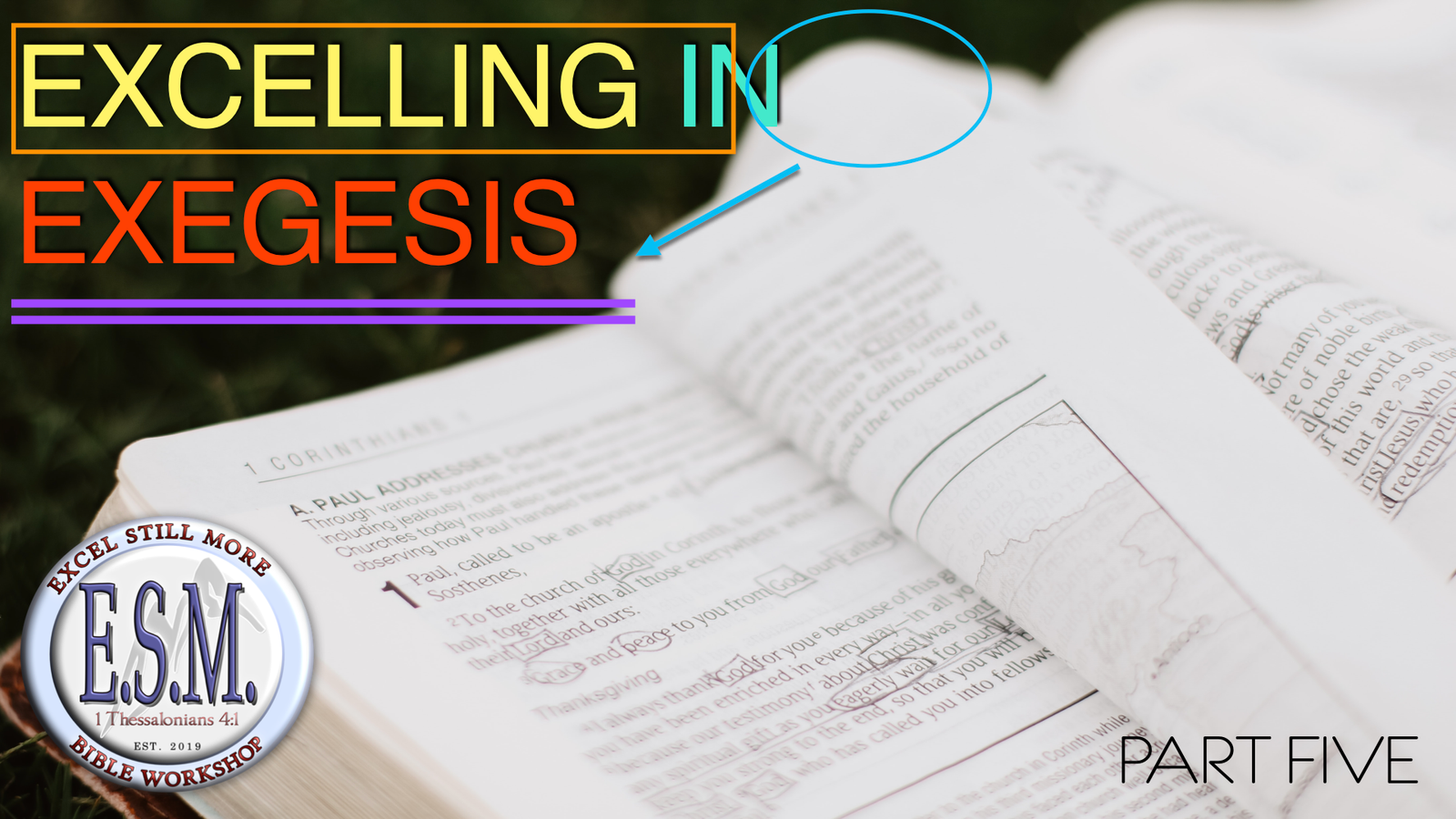(Note: If you haven’t read the previous articles, please do so!)
We’re talking about KEY AREAS we should consider when exegeting the Word of God. The FIRST KEY area was a genre, the SECOND KEY area was to consider the words being used, and the THIRD KEY area was to consider the book as a whole.
Fourth, how to turn your Bible into a valuable study Bible. You may be one that does not like to write in your Bible. If so, then go buy a cheap $5.00 Bible and mark it up. It is recommended that you not underline anything (yet) or color in whole verses or paragraphs. This will be explained later. What are you going to mark up? Years ago I developed a system that morphed into what I now call “the four P’s.”
The four P’s are…
-
Prevalent words
-
Purpose Statements
-
Prayers
-
Petition Verbs.
We will begin discussing these “Four P’s” in the next several “Excelling in Exegesis” articles. Anyway, the “Four P’s” comprise what we’ll be marking in our Bibles.
What should you use when you are going to write in your Bible? There are so many pens and markers out there, many of which are not good to use in Bible marking. Most Bibles are produced with super thin pages. That means that what is written or marked can (and often does) bleed through to the other side. That creates a mess! I recommend that you purchase the Micron Pens with a .005 tip. Then, purchase the Crayola Colored Pencils. You can get them in 24 packs (24 colors) with erasers.
Sorry about some of that “advertising,” but I get asked so often about pens and markers I thought I might as well go ahead and include that here. Let’s then move on to what we’re really trying to do.
First, Bible marking is a way to help us be a better student. I’ve been teaching “How to Study the Bible” for a long time. All faithful Christians want to improve the way they study God’s word. Remember: reading is not studying. Those who have taken the time to mark up their Bibles have confirmed with words like, “This method has changed my life! I now feel like I know how to study!”
Second, Bible marking is a way to organize your study. You will be doing basically the same thing with every book in the Bible. It helps when you have this continuity.
Third, Bible marking brings you closer to understanding what the original writer meant and what the recipients understood when they received that book. When we mark the text, it helps us see what they saw, even though it was originally written in a language other than English.
A very important point needs to be made here. Bible marking is not the end but a means to an end. The end is for each of us to “know the truth,” the truth that will “make us free” (John 8:32). God desires for all to be saved and to come to a knowledge of the truth (1 Timothy 2:4). A study method that will help us know truth, and encourage us to obey the truth, is priceless!
Denny Petrillo
Denny is married to the former Kathy Roberts. They have been married since January 1978. They have three children (Lance, Brett, and Laura) and Six grandchildren (Chloe, Ashlyn, Sophie, Easton, Brelyn, and Kyson). He has served as the President of the Bear Valley Bible Institute since 2004 and has been a full-time instructor since 1985. He has preached in Mississippi, Arkansas, Nebraska, and Colorado. He has taught numerous classes for the World Video Bible School and has authored several books and commentaries. He graduated from the Bear Valley School of Preaching (now the Bear Valley Bible Institute), received an AA degree in Bible (York College, York, Nebraska), BA in Bible and Biblical Languages (Harding University), and an MA in Old and New Testaments (Harding Graduate School of Religion), and a Ph.D. in Religious Education (University of Nebraska).






